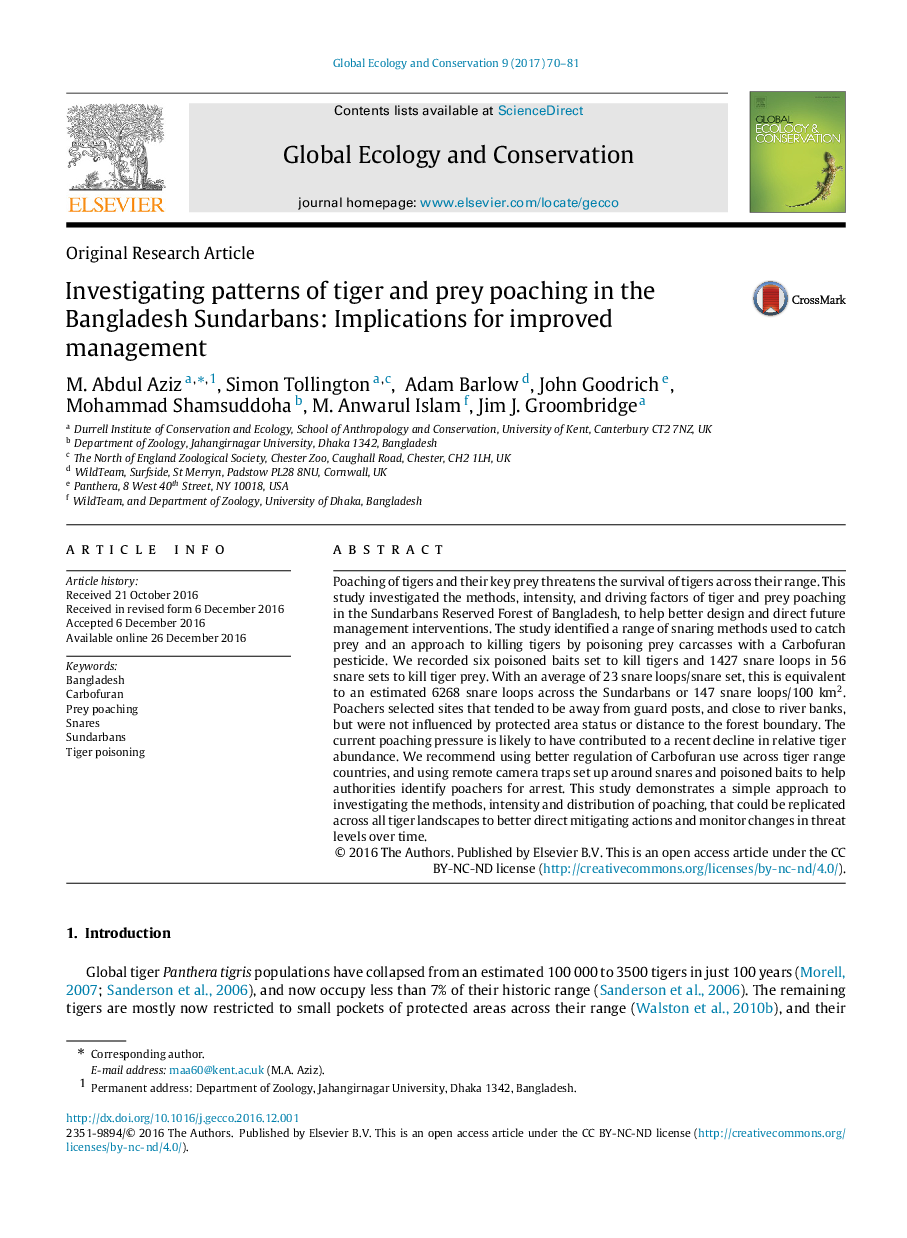| Article ID | Journal | Published Year | Pages | File Type |
|---|---|---|---|---|
| 5742430 | Global Ecology and Conservation | 2017 | 12 Pages |
Poaching of tigers and their key prey threatens the survival of tigers across their range. This study investigated the methods, intensity, and driving factors of tiger and prey poaching in the Sundarbans Reserved Forest of Bangladesh, to help better design and direct future management interventions. The study identified a range of snaring methods used to catch prey and an approach to killing tigers by poisoning prey carcasses with a Carbofuran pesticide. We recorded six poisoned baits set to kill tigers and 1427 snare loops in 56 snare sets to kill tiger prey. With an average of 23 snare loops/snare set, this is equivalent to an estimated 6268 snare loops across the Sundarbans or 147 snare loops/100 km2. Poachers selected sites that tended to be away from guard posts, and close to river banks, but were not influenced by protected area status or distance to the forest boundary. The current poaching pressure is likely to have contributed to a recent decline in relative tiger abundance. We recommend using better regulation of Carbofuran use across tiger range countries, and using remote camera traps set up around snares and poisoned baits to help authorities identify poachers for arrest. This study demonstrates a simple approach to investigating the methods, intensity and distribution of poaching, that could be replicated across all tiger landscapes to better direct mitigating actions and monitor changes in threat levels over time.
